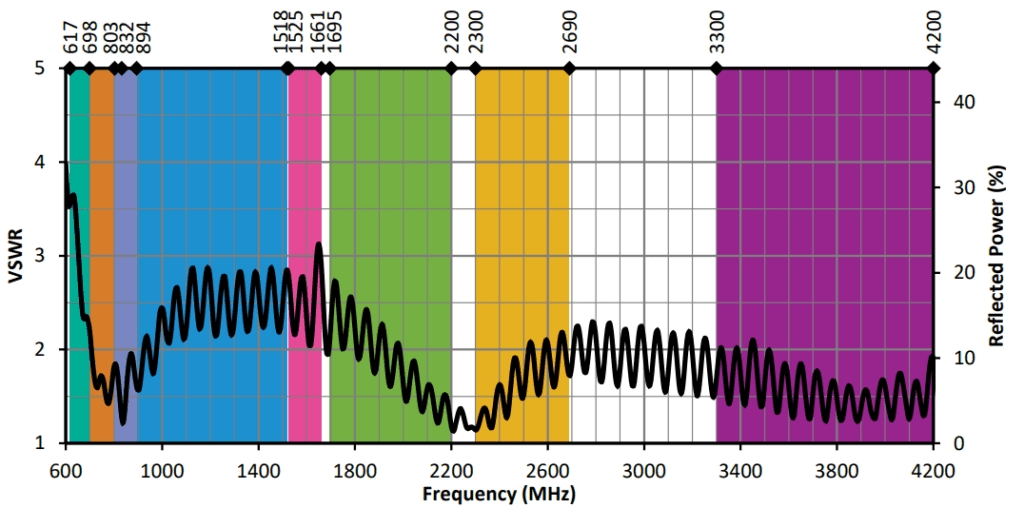Choosing an efficient antenna is an important task for any IOT installation. LTE is a broad standard covering many frequency ranges and not all bands are created equal. While over 70 bands are defined, only a subset are used in each country. Of those, only a small number are allocated for CAT-M and IOT-NB devices such as the FusionDAQ MI-8. Any antenna should be paired with the device and the wireless standard being used.
CAT-M and IOT-NB are two subsets of the LTE standard. As their names imply, they were created to support IOT devices. CAT-M and IOT-NB are optimized to minimize power consumption at the expense of peak data rate. The FusionDAQ MI-8 supports both protocols.
In the United States, the three largest cellular carriers which support CAT-M and IOT-NB are AT&T, T-Mobile and Verizon.
| LTE Band | Frequency | AT&T | T-Mobile | Verizon |
| 2 | 1850-1990 MHz | Yes | Yes | |
| 4 | 1710-2155 MHz | Yes | Yes | Yes |
| 12 | 699-746 MHz | Yes | Yes | |
| 13 | 746-787 MHz | Yes | Yes | |
| 66 | 1710-2200 Mhz | Yes |
Based on the table above, LTE communication for IOT devices in the United States is focused into two primary bands: the low band (700-787 MHz) and the mid-band (1710-2200 MHz). Many LTE antennas are optimized for the 2 and 5 GHz high-bands used for voice and high-speed data and only provide marginal support for the lower frequency bands. Any antenna used with the MI-8 DAQ should support one or both of the lower and midrange bands.
Once the required frequencies are determined, the next step is considering an antenna’s performance at those frequencies. One useful measurement is VSWR or Voltage Standing Wave Ratio. This number is frequency dependent and describes how well the antenna is ‘matched’ to the radio. A value of 1.0 indicates a perfect match. Anything higher indicates reduced performance. A VSWR below 1.5 is considered ideal. At that value almost 96% of the power generated by the radio is transmitted by the antenna. A value of 3.0 indicates 75% of the radio power is transmitted by the antenna. By 6.0, less than 49% of the radio transmitted power is usable.
The following table describe the VSWR of the Linx Technologies magnetic base antenna sold by FusionDaq

Notice the VSWR is less than 2.0 for the 698-803 MHz band and less than 2.7 for the 1710-2200 MHz band.
Another important antenna parameter is the gain or directivity. This parameter answers the question: Of the available power, what direction is it transmitted by the antenna? Is it balanced in all directions or focused into a narrow region?
Dipoles, monopoles, and whip antennas are considered omni directional antennas and are great choices for mobile applications where the direction to the nearest cell tower constantly changes. They radiate in a donut pattern. If a dipole is pointed straight up, it will radiate well in a circle: north, east, south and west, but it will radiate poorly straight up and straight down.
Directional antennas such as Yagi and Log-periodic focus the RF energy in a single direction. They can be a great way to boost a week cellular signal for fixed installations where the direction to the nearest cell tower is known. Since they focus the radio signal into a smaller area they can amplify a marginal signal, even if the VSWR for the antenna is not ideal.


Conclusion
Antenna selection is a game of trade-offs. With so many LTE antennas available today, it is important to select one that will perform well for each specific IOT installation. For design advice or any other assistance in your next IOT installation feel free to reach out to us at Technical Support
